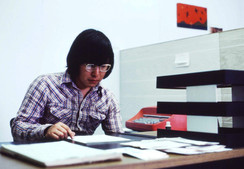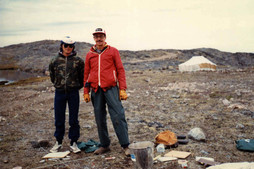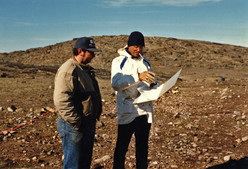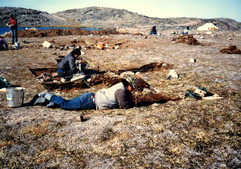- About
- Discovering Archaeology
- Projects and Activities
- Online Resources
- References
Archaeology
History
Archeological Work in Nunavik
Inuit culture is based on oral tradition, because until recently, our history was not transmitted by the written word. Still, our past lives on in the stories, customs and material traces left by our ancestors. Archaeology allows us to expand our knowledge of our past and the unwritten history of our region. Until the early 1980s, all archaeological work in Nunavik was carried out by universities and governmental organizations from the South. But this changed when Daniel Weetaluktuk, a native of the community of Inukjuak and an archaeology enthusiast, fired an interest in science and archaeology among the team at Makivik Corporation and throughout the territory of Nunavik. His accidental death in 1982 left a massive void in the world of Nordic archaeology.
Creation of the Archeology Department
As a result, the Elders of Nunavik decided to provide Nunavimmiut with the tools and means to participate in the study and analysis of their past and to carry out research. In 1983, the Conference of the Inuit Elders of Nunavik adopted a resolution that led ultimately to the creation of the Archaeology Department at Avataq Cultural Institute.The Archaeology Department was created in 1985 with a mandate to carry out and supervise archaeological research on the Inuit, their ancestors and predecessors. It helps to protect, preserve and develop the archaeological resources of Nunavik by various means ranging from sensitization to concrete action in the field.
Archaeological Fieldwork for the Young Inuit
The Department has also created a program designed to give Inuit students archaeological fieldwork experience. For a number of years, young Inuit have worked alongside the Avataq Institute’s archaeologists to carry out research in various parts of Nunavik. These young people have acquired new areas of knowledge, and some among them may become Nunavik’s future archaeologists and historians.
The Department’s Projects and Activities
Since the Department was created, it has participated in a number of important projects to study and manage archaeological resources, most notably the preservation of the Qajartalik site, (JhEv-1), the SSRHC-funded Community-University Research Alliance (CURA) ‘From the Tuniit to the Inuit’ (2001-2003), a project to develop Quebec national parks (2001 and ongoing) and a systematic inventory of 10 Nunavik communities in connection with the project to build new and improved airport infrastructure (1985-1987). The team has recorded some 600 archaeological sites representing 4000 years of history. Their research has resulted in numerous publications and more than a hundred technical reports.
Working in Collaboration
Avataq has collaborated with universities, governmental and scientific organizations, researchers and university students on almost every archaeological effort undertaken in Nunavik.




